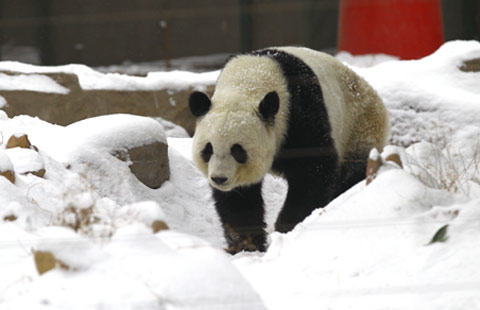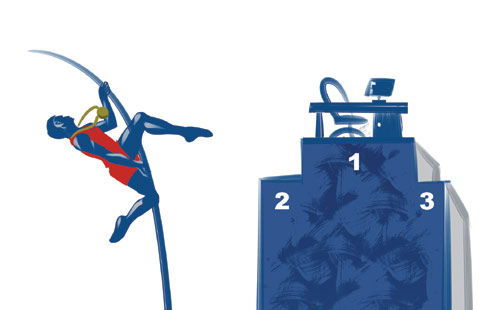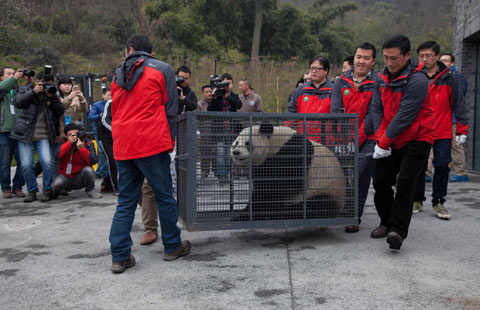Do-it-yourself air
Updated: 2014-02-27 07:31
By Eric Jou (China Daily)
|
|||||||||||
When Beijing was hit with horrific bad smog in early 2013, one group of friends saw past the fog to a bright spark of opportunity - creating and selling homemade air filter kits. Eric Jou has the story.
In early 2013, northern China was hit with a particularly bad spell of poor air quality. This period in Beijing became known around the world as the "airpocalypse", and the nation's capital was compared to the futuristic dystopia depicted in movies such as Blade Runner. However, for one team of young Americans and Chinese, the air crisis was the inspiration for a brilliant project.
Gus Tate, who has been in China since 2007, has spearheaded a project with his friends and partners to educate people who live in Beijing about the benefits of having an air filter in the home.
Tate, who now runs the social enterprise Smart Air Filters, got involved in the sale of do-it-yourself filtration kits through his friend Thomas Talhelm. Tate says that Talhelm, who was researching cultural psychology in China as part of a Fulbright program, became interested in air filters when the "airpocalypse" hit Beijing in January 2013.
"He started to think more and more about air pollution," says Tate. "He started looking up stuff online and he found out that all you really need is a HEPA filter and so he decided to strap one together. It's not the first time that people have done it."
Talhelm's project is very simple. Essentially, it's taking a high-efficiency particulate absorption (HEPA) filter and strapping it onto a fan. The fan sucks in air and blows it out through the filter. The project attracted a lot of attention when Tate procured a particle counter and Talhelm posted the results of air-quality tests, before and after the homemade filter had been running, on his Tumblr blog. It was not long after that Smart Air Filters came into being.
On the Smart Air Filters website, data about air pollution and its effects are provided in the form of graphs and numerical data. There are numbers and figures showing the amount of airborne particulates with and without the use of a Smart Air Filter.
Taking their newfound data, Talhelm shared the findings with as many people as he could. Smart Air Filters started conducting workshops where Talhelm, Tate or someone from the team explains and shows people how to use the filters.
In about September of 2013, Talhelm returned to the University of Virginia to pursue his doctorate, and Tate took over the business.
"I just happened not to have a job at the time and I was trying to find a job as a Chinese teacher in the States. I don't remember if it was me that joked about doing this full time as my job," says Tate. "We continued the workshop thing, and it kind of fit into our plans. Everyone was thinking this could be a real thing, we could help people buy their own kits and make little kits for people to make their own filters and sell them online."
After building a website, Smart Air Filters started selling its DIY kits online. A basic DIY filtration kit includes a fan, a HEPA filter and a strap to put everything together. The kit costs about $33.
According to Tate, the filters are doing well and requests for workshops have been ongoing.
"We're trying to keep education as one of the main goals, aside from selling a lot of kits, we want people to know that this is a thing that they can do, like a China survival workshop," says Tate. "At this point word of mouth about the kits is doing more than one workshop at a time."
Currently, Smart Air Filters has two kits for sale on its website. Tate says that a third model is in the works.
Liu Shuwei, who recently moved from Beijing to Shanghai, says he's been using a Smart Air Filter since November. Liu says he's been pretty happy with the results of the filter despite the fact that he thinks the machines are too loud.
After learning about the filters from a friend, Liu decided to buy one. Because of the sound coming from the filter, Liu says he uses it when the situation is very bad. Despite the lack of use, Liu says he's impressed by Smart Air Filters.
"From my first impression, I've always thought that Smart Air was really good. The pricing is really low and it's good. I think their idea is to spread the knowledge that when there is bad air one needs an air filter," says Liu. "They're spreading education. Kind of like when you see a person wearing a mask on the street, you get the idea that the air is bad."
Chinese customers such as Liu are quickly becoming Smart Air Filters' main customer base. Originally, because of tech limitations, Tate says only foreigners or those with a PayPal account could purchase the filters, but now with Taobao and Alipay, locals are getting in on the action. Smart Air Filters ships all across the country and workshops are held in Beijing and Shanghai.
So far, according to Tate, there haven't really been any major competitors, not that competition worries him.
"It's impossible for us to lay claim to the idea - it's DIY, it's open source, we just strap filters onto fans," says Tate. "If the everyday person copied and used it and it became widespread, I'd be happy. We want everyone to know about it."
Contact the writer at ericjou@chinadaily.com.cn.
|
Gus Tate from the United States straps a high-efficiency particulate absorption filter onto a fan to make a do-it-yourself filtration kit. Photos Provided to China Daily |
|
Thomas Talhelm shows people how to use the filters at a Smart Air Filters workshop in Beijing. |
(China Daily 02/27/2014 page20)
Today's Top News
Ukraine disbands riot police unit
Putin puts troops in W.Russia on alert in drill
Construction of China-Russia railway bridge starts
Turks stage protests demand PM's resignation
Forecast:China to lower growth rate
Italian new govt wins vote of confidence
Ukraine enters uncharted water
Li urges stronger S. China Sea ties
Hot Topics
Lunar probe , China growth forecasts, Emission rules get tougher, China seen through 'colored lens', International board,
Editor's Picks

|

|

|

|

|

|







